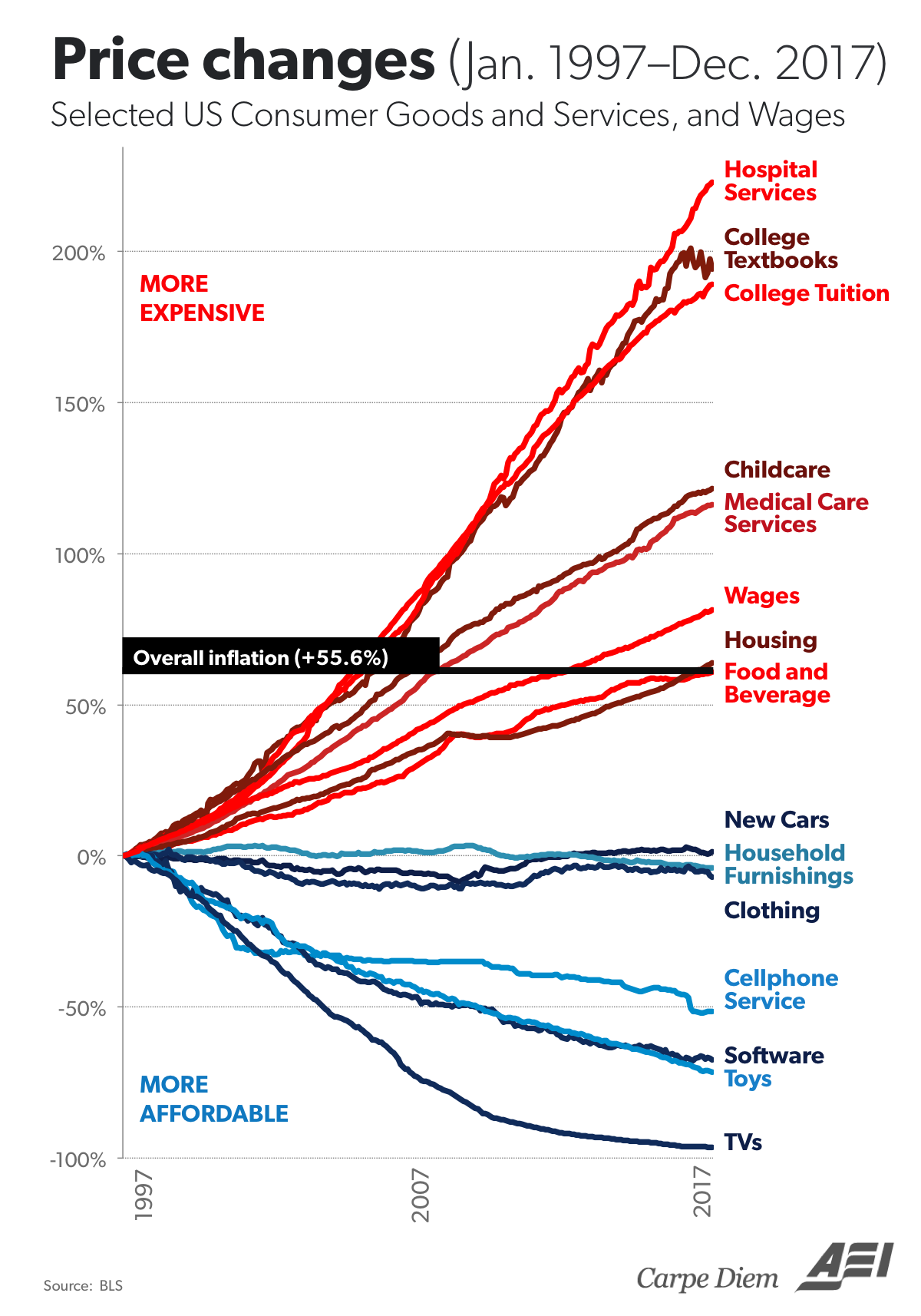China is simply too big for the US-led postwar order to continue. The system is breaking down. Something must change. The White House’s approach looks disorganized and/or stupid, but doing nothing is also obviously wrong.
Cartels and prisoners’ dilemmas
Free trade since WWII has been a so-called prisoner’s dilemma: everyone is better off with free trade, but an individual country may be still better off if it can find a way to protect its own market while exporting freely into someone else’s. But if everyone protects their own market, then there is no free trade, and everyone is worse off.
How to solve this? One way is to have a huge economy that can afford to tolerate small-scale noncompliance without retaliating. The US held that role.
A great analogy is Saudi Arabia’s role in OPEC. A cartel is also a prisoner’s dilemma: if oil producers all cooperate, they can restrict supply, forcing the price of oil up. But each producer individually has an incentive to cheat, by selling more oil than agreed. If all producers cheat, then the oil price falls, and the cartel fails.
Saudi Arabia holds together the cartel by tolerating small-scale cheating by OPEC members (looking at you, Iran). Saudi oil production is so huge that they can restrict supply a bit more than agreed, holding the price up for everyone else, while still benefiting themselves from an imperfect but surviving cartel.
This is what the US has been doing for the global trading system for decades. As the Saudi Arabia of global trade, we could tolerate small-scale protectionism by counterparties, yet still benefit ourselves.
But is America still the Saudi Arabia of global trade? No. That role has passed to China.
Key assumption underpinning the postwar order
Postwar free trade rested on a single unstated assumption: the US would always be the largest economy. This assumption was crucial in at least two ways.
- As the largest manufacturing power, the US could operate the most powerful military, allowing a global security guarantee against trade blockades or other threats of force.
- The huge US market allowed us the flexibility to tolerate slightly “unfair” trade. We could look the other way as smaller economies like Japan and Germany protected their own markets and built export economies through persistent, but tolerably small, trade surpluses with the US.
This was intentional, and smart. In 1945, the aftermath of WWI was a recent memory. Punitive reparations, applied to Germany after 1918, led directly to WWII. It was perfectly logical to instead help Japan and Germany rebuild through exports — even if they “got the better end of the deal” — because building happy peaceful countries was cheaper than fighting World War 3.
Japan almost broke this model, decades ago, as its GDP reached between 50% and 70% of US GDP in the late 1980s to early 1990s, depending on how you measured it. Japan’s heavily protected domestic market built up huge trade surpluses with the US, hollowing out US manufacturing, leading to protectionist sentiment in the US. But the threat to the system receded, partly because of demographics, partly because Japan is ultimately a huge beneficiary of the US security shield, but mainly because the US was still bigger than Japan. We were still the Saudi Arabia of global trade.
China introduces an entirely different situation. It has 10 times the population of Japan, and 3.5 times that of the US. Its manufacturing output is 30% greater than the US, and growing faster. Far from benefiting from the US security shield, China openly threatens it. Yet China continues to benefit from the export-led growth model followed by Japan and Germany: shield their own markets while selling into relatively open ones.
This cannot go on much longer. The rest of the world is simply not big enough to absorb the gathering tidal wave of Chinese exports. Unchecked, it will inevitably hollow out most Western manufacturing capacity, and China will be by far the world’s largest economy.
This, in turn, breaks the assumptions, above, that underpinned the postwar order.
For the first time in 350 years, a non-Western non-democracy is becoming the largest geopolitical force in the world. If you think that won’t affect your life, or change the way the global trading system works, wake up.
What about comparative advantage?
Economists at this point will start wailing about comparative advantage, so let’s explore that.
The theory of comparative advantage argues that countries should specialize in producing goods for which they have the lowest opportunity cost, thereby enabling mutual gains from trade. The theory works great when its foundational assumptions are satisfied; however, it rests on many such assumptions, most of which are not satisfied with respect to China:
- Full Employment
- Factor Mobility (Domestic vs. International)
- No Scale Economies
- No Externalities
- No Dynamic Comparative Advantage
- No Trade Imbalances
- No Strategic Industries or National Security Considerations
- Perfect Competition
It should be obvious, on the face of it, that comparative advantage cannot be used to argue for free trade with China, because the theory’s foundational assumptions are not satisfied. In particular, China is using import barriers to build insurmountable scale economies in key industries contrary to #3 above, with the goal of attacking #7 above. Even Adam Smith saw this pretty clearly in Wealth of Nations in 1776; it’s not a new observation.
What the above argues for, instead, is that the best the US can do now is build a free trade system among the remaining Western economies, which can then work as a bloc (again the OPEC analogy) to force China to open its markets.
I have no idea what Trump is trying to do, but I think the above is what Treasury Secretary Bessent might be trying to do. I’m not sure it can work. It may already be too late. But doing nothing is worse.
